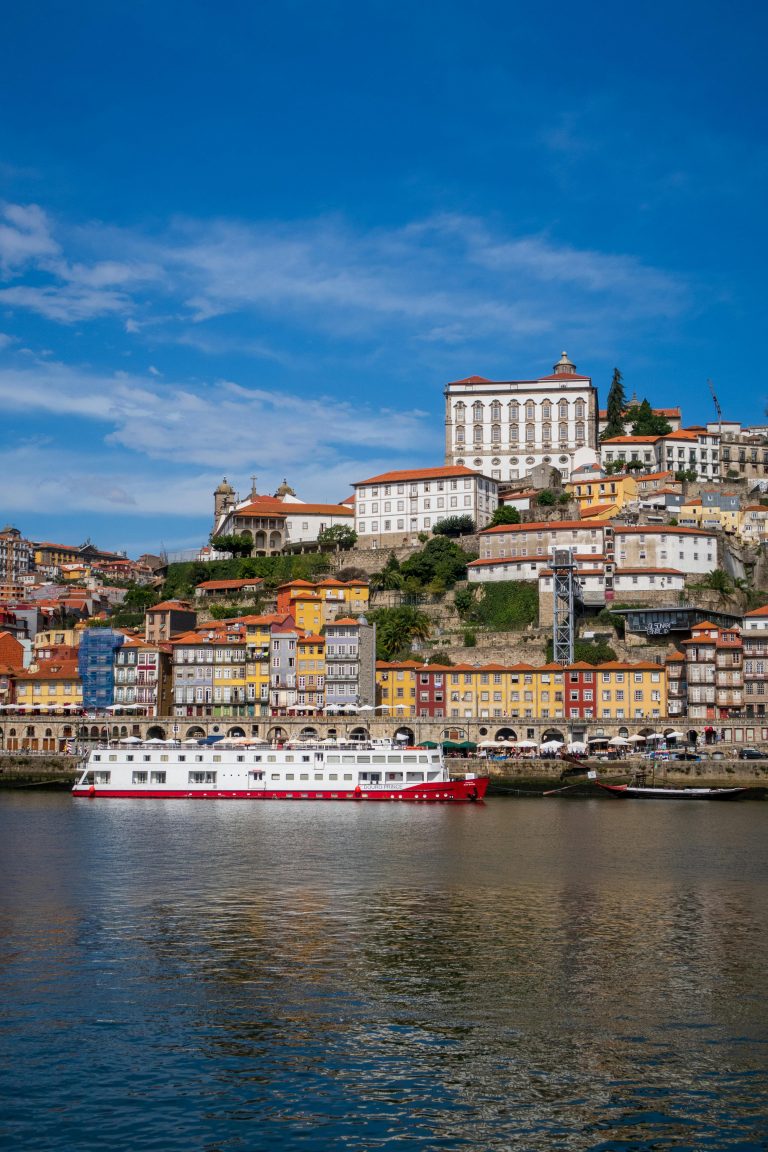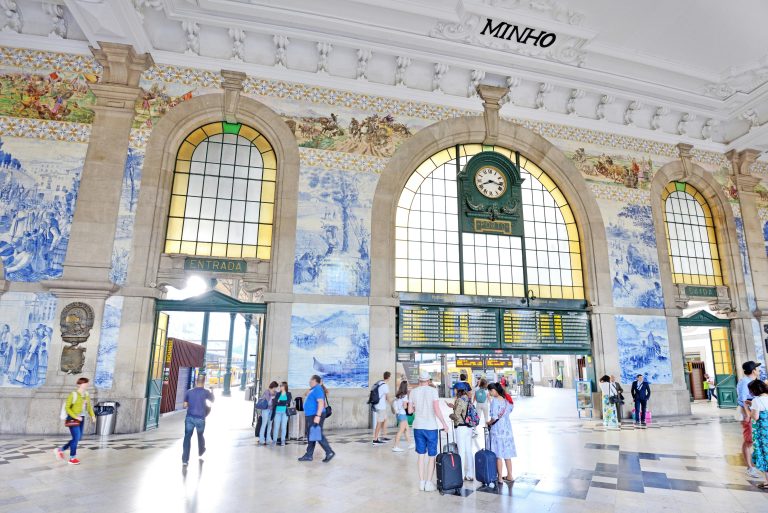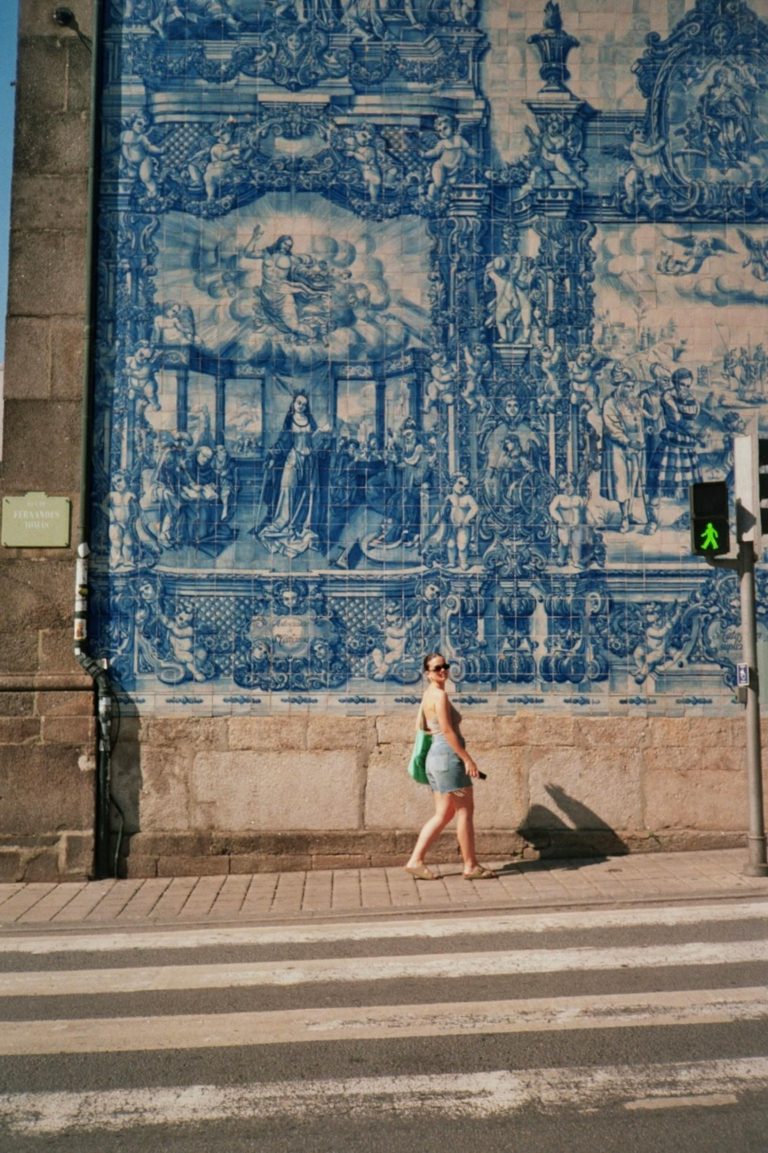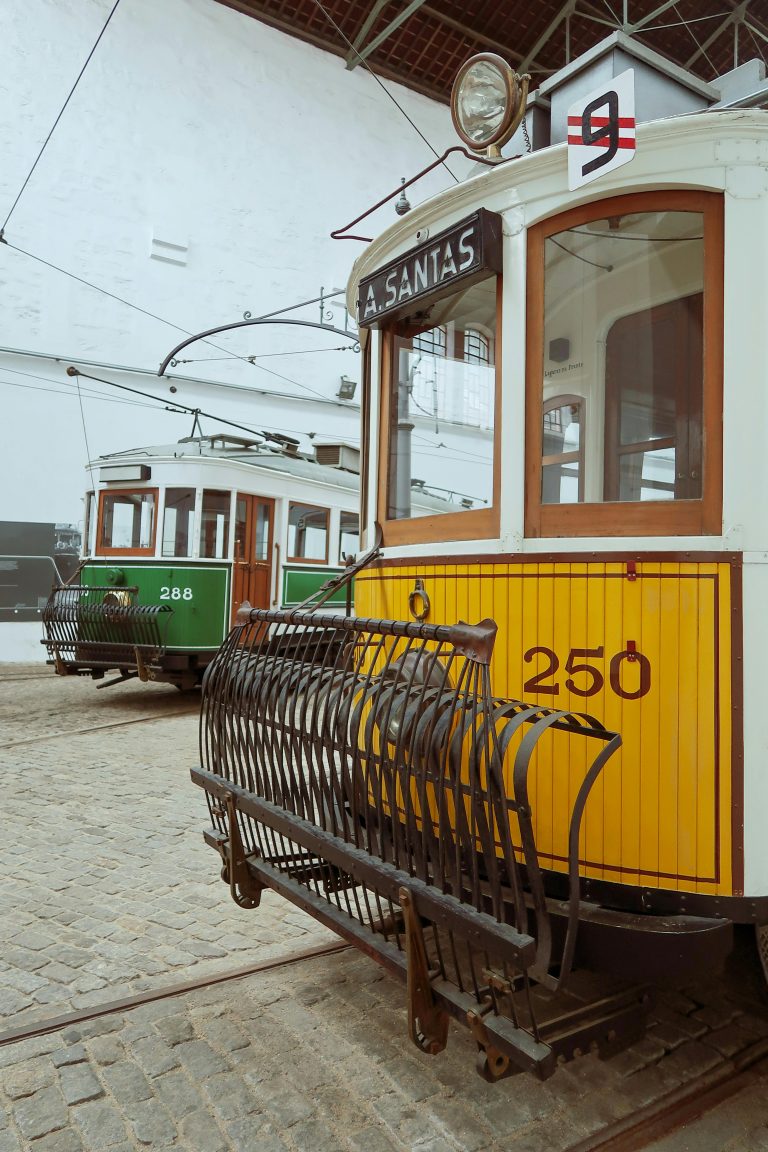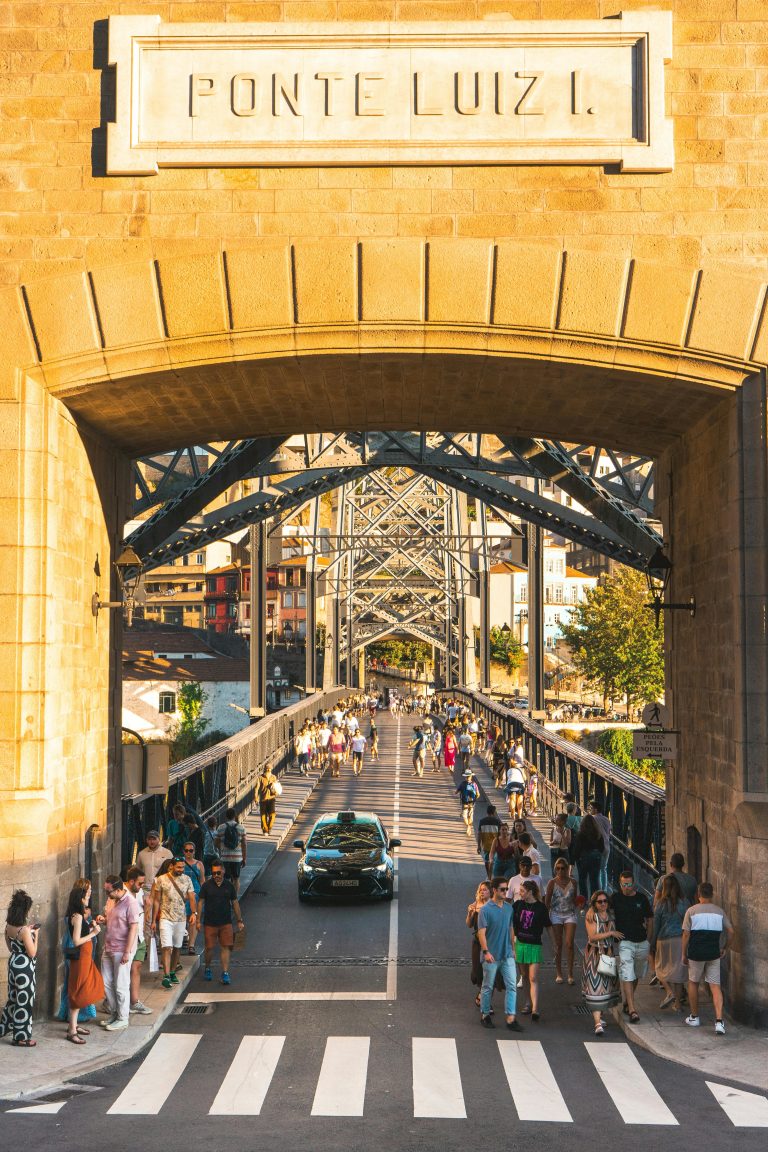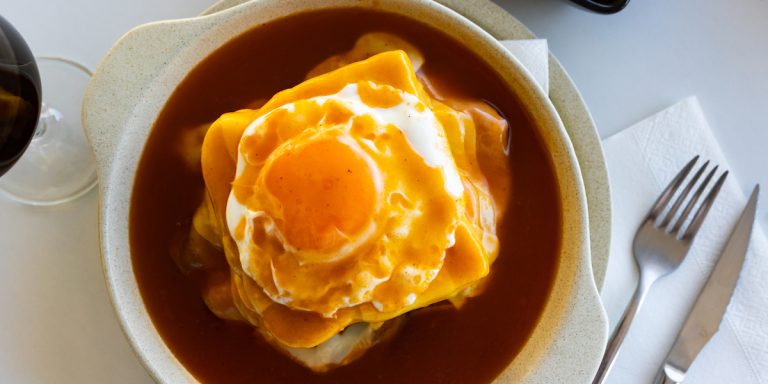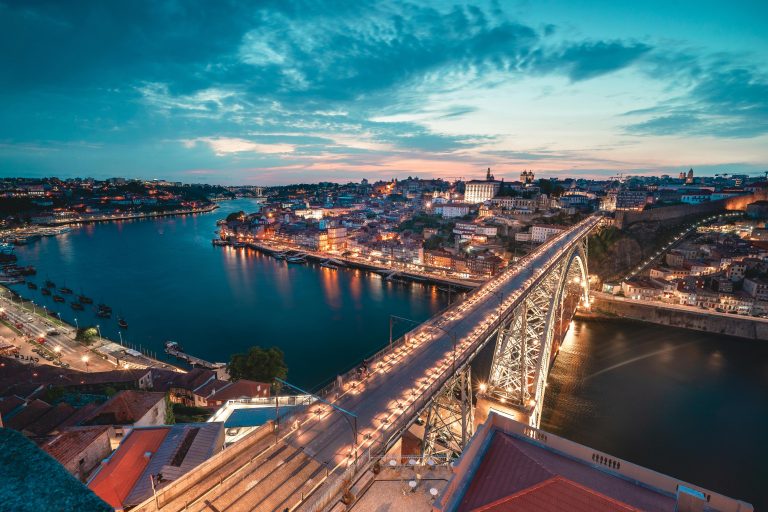Porto, the authentic city that gave Portugal its name
Porto, the city that lent its name to Portugal, attracts millions of tourists each year with its beauty, the charm of its attractions, and its rich history. It serves as a gateway and starting point for journeys through the diverse landscapes and cultures of Portugal. Increasingly, Porto is becoming a key stop on river cruise itineraries, thanks to its authentic character and multifaceted heritage.
The Cathedral, known as Sé Catedral, is the perfect starting point for exploring Porto (or Oporto, as many call it). As one of the city’s most significant architectural and religious landmarks, it stands majestically on a hill in the heart of the historic center, offering spectacular views over Porto and the Douro River. Dating back to at least the 12th century, its construction began in 1110 under the direction of the city’s first bishop, D. Hugo, during the Romanesque-Gothic period. Over the centuries, it underwent numerous modifications and expansions, incorporating elements from Romanesque, Gothic, and Baroque styles. Elevated to a basilica in 1394, it became an important religious center in the city, maintaining its charm and grandeur through various restorations.
oporto
porto
Ribeira, the old town of Porto, Portugal
From the Cathedral, a series of narrow streets and staircases lead to one of the city’s most picturesque and captivating neighborhoods: Ribeira. This historic district, declared a UNESCO World Heritage Site, embodies authentic Portuguese atmosphere, fascinating architecture, and vibrant nightlife. Its cobbled streets and colorful houses showcase traditional Portuguese architecture, with pastel-painted facades, wrought-iron windows, and flower-adorned balconies creating a charming and romantic setting. Strolling through the streets, one can admire historic buildings like the Casa do Infante, a medieval house believed to be the birthplace of Prince Henry the Navigator. The heart of Ribeira is its riverside promenade along the Douro, bustling with bars, restaurants, and cafés.
Porto is renowned for its iconic bridges over the Douro River, notably the Dom Luís I Bridge (1886), an impressive iron structure designed by Teófilo Seyrig, connecting Ribeira with Vila Nova de Gaia. Visitors can cross the bridge on foot or by tram, enjoying breathtaking panoramic views of the city.
sao-bento-jpeg_header-5159040 (1)
azulejos
fiume douro
During a visit to the city of Porto, a stop at São Bento Station—now a symbol of the city—is an absolute must. It is one of the busiest and most well-known railway stations in Portugal. The station was built on the site of a former convent, following the expansion of the railway line in 1896. The architectural project, designed by José Marques da Silva, was approved by the city council in the same year. Although construction began in the early 1900s, various delays meant the station only opened a decade later, in 1916. The architectural style reflects the Beaux-Arts school of Paris. In order to make the structure feel more “national,” the Portuguese later decorated the interiors with more local elements. It is a true attraction—perhaps one of the most visited in the city! The interior is entirely adorned with over 20,000 blue and white azulejos, creating a truly unique visual experience. The waiting room alone is covered with over 500 square meters of azulejos. It took a total of 20,000 tiles to complete the masterpiece. These stunning tiles depict a wide variety of scenes, including rural life, processions, pilgrimages, livestock fairs, and grape harvests. One section is dedicated to the history and evolution of transportation in Portugal following the inauguration of the railway system.
Porto was named European Capital of Culture in 2001, and this is clearly reflected in its rich cultural heritage: the city walls, the Church of São Francisco, the cutting-edge Casa da Música, the gardens of the Palácio de Cristal, and more.
The Lello e Irmão bookstore is considered one of the most beautiful in Europe; its eccentric design even served as inspiration for the first Harry Potter book. Alongside these unique landmarks, music and fine wine are essential parts of the Porto experience. One highlight is the Fado performance at Cálem Cellars—an unforgettable experience! And if you’re passionate about marine life, be sure to get a ticket to SEA LIFE Porto, an incredible aquarium home to more than 3,000 species of aquatic animals and plants.
libreria-lello
javierbalseiro-28808551
ponte luiz
The museums of Porto are also worth a visit. There are galleries and collections of all kinds, such as the Casa Guerra Junqueiro, which was the home of the Portuguese poet; the Serralves Foundation, ideal for contemporary art lovers; the Portuguese Centre for Photography, located in a former prison; the Museum of Stained Glass or the Casa do Infante, to name just a few examples. If you’re traveling to Porto with children, you can spend a different morning or afternoon by booking a ticket for the WOW Porto museum or the World of Discoveries. These are fully interactive spaces where you can have fun between monuments.
In Porto, the experience is not limited to culture and museums: the gastronomic scene also plays a leading role, with authentic flavors and local culinary traditions. So, where to eat in Porto? And most importantly, what to eat?
Bacalhau in all forms and cooking methods, Porto-style tripe, éclairs, Caldo Verde, Francesinha, a glass of Porto wine, Pasteis de Nata, Bifana, and much more. It’s impossible to truly know a place without immersing yourself in its gastronomic culture! A famous cod dish is “punheta de bacalhau”: raw cod chopped with onion. Cod is found without a doubt in every shop and restaurant in Portugal, from Lisbon to Porto. It seems that the Portuguese have 366 ways to cook it, with different recipes and variations, each more delicious than the last!
food porto
Francesinha, popular Portuguese sandwich with beer sauce
caldo verde
The Francesinha is undoubtedly one of the most well-known Portuguese dishes, a super sandwich! It can be described as a multilayered toast: between the two slices of bread, each layer contains a different ingredient: slices of beef, cheese, sausages, ham, mortadella, and other ingredients. All of this is covered with a generous layer of melted cheese mixed with a sauce made from meat, beer, tomato, and piri-piri (a type of chili). In some versions, like the one we had, you might also find a fried egg on top, adding a cherry on the cake, and of course, to add even more calories, some fries on the side.
Caldo Verde, which in Portuguese translates to “green broth,” is a soup found everywhere in Porto. It can be served as an appetizer or a main dish. It is a soup made with potatoes, “couve galega” (the cabbage that gives the dish its green color), and some slices of chouriço (a slightly spicy sausage). The Bifana: this is a small, round sandwich, slightly golden on the outside and filled with fried or grilled pork. It’s perfect for a snack or a lighter lunch. Thanks to its recipe, it can be considered the queen of Portuguese slow food. Lastly, the Pasteis de Nata is the quintessential Portuguese dessert, born in Lisbon thanks to the monks of the Jeronimos Monastery. Pasteis de Nata are small puff pastry baskets filled with delicious custard cream, a true delight.
oporto night
Storia-della-Valle-del-Douro-1024×576 (1)
Porto and Surroundings for Alternative Itineraries
For art lovers, in the afternoon, instead of the Palacio da Bolsa, we recommend a visit to the Museu Nacional Soares dos Reis, one of the city’s most important art collections. If you love photography, you’ll find the Centro Portugues de Fotografia in the historic center. For those interested in religious architecture: in addition to the churches already mentioned, the Igreja do Carmo and the Igreja das Carmelitas are worth a visit. Don’t miss a visit to the Igreja da Misericórdia either. If you’ve already been to Porto or want to explore the surrounding countryside, the Douro Valley is a must-see, with wine tastings and lunch from Porto. If you are traveling with family, besides the boat ride on the river and the bookstore, a visit to the Jardim do Palacio de Cristal, the city’s most beloved green space, is a must, not far from the city center.
Don’t miss news, updates, and reviews about the world of cruises on Cruising Journal, with photos, videos, and cruise offers.

